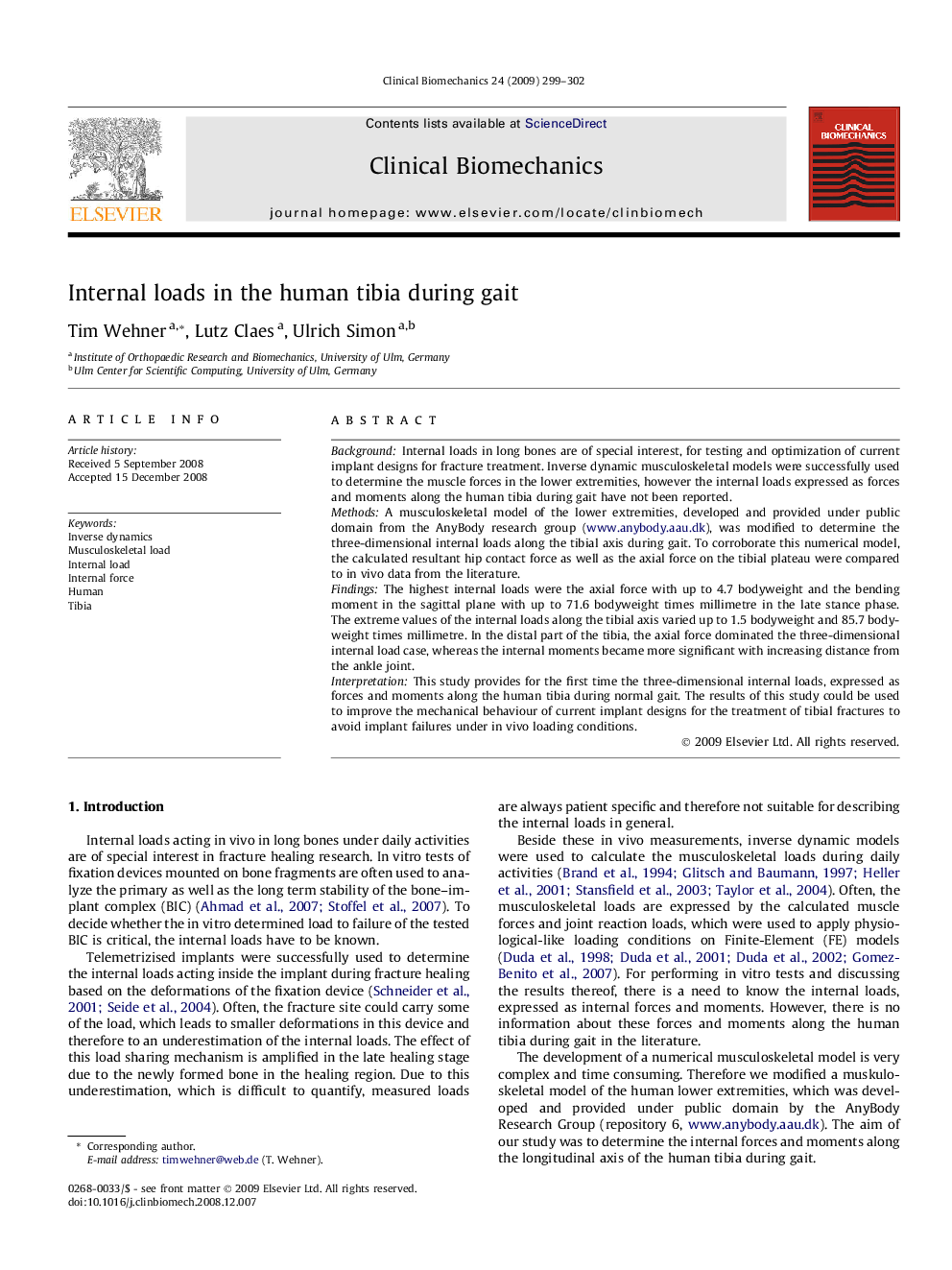| Article ID | Journal | Published Year | Pages | File Type |
|---|---|---|---|---|
| 4050907 | Clinical Biomechanics | 2009 | 4 Pages |
BackgroundInternal loads in long bones are of special interest, for testing and optimization of current implant designs for fracture treatment. Inverse dynamic musculoskeletal models were successfully used to determine the muscle forces in the lower extremities, however the internal loads expressed as forces and moments along the human tibia during gait have not been reported.MethodsA musculoskeletal model of the lower extremities, developed and provided under public domain from the AnyBody research group (www.anybody.aau.dk), was modified to determine the three-dimensional internal loads along the tibial axis during gait. To corroborate this numerical model, the calculated resultant hip contact force as well as the axial force on the tibial plateau were compared to in vivo data from the literature.FindingsThe highest internal loads were the axial force with up to 4.7 bodyweight and the bending moment in the sagittal plane with up to 71.6 bodyweight times millimetre in the late stance phase. The extreme values of the internal loads along the tibial axis varied up to 1.5 bodyweight and 85.7 bodyweight times millimetre. In the distal part of the tibia, the axial force dominated the three-dimensional internal load case, whereas the internal moments became more significant with increasing distance from the ankle joint.InterpretationThis study provides for the first time the three-dimensional internal loads, expressed as forces and moments along the human tibia during normal gait. The results of this study could be used to improve the mechanical behaviour of current implant designs for the treatment of tibial fractures to avoid implant failures under in vivo loading conditions.
